
Research of the MIA Group
Home
About Us
People
Teaching
Research
Publications
Awards
Links
Contact
Internal
We perform research on mathematically well-founded methods in image
processing and computer vision. The main focus is on techniques based
on partial differential equations and variational methods, but also
morphological methods, wavelets and nonlocal filters are used.
We are interested in all aspects of these techniques, including
mathematical modeling,
well-posedness analysis, efficient algorithms for sequential and
parallel computer architectures, and a multitude of applications.
Image Processing –
Computer Vision –
Scientific Computing –
Applications

Diffusion Filtering
Noisy imagery constitutes a very frequent problem, appearing e.g. in digital images that have been acquired under poor illumination conditions, or in ultrasound images arising in medical imaging. Thus, one of the most important problems ...

Mathematical Morphology
Mathematical morphology originated from the study of porous media in the mid-sixties. Since then it has undergone a tremendous development resulting in efficient tools for modern image processing and analysis ...

Relations between Denoising Methods
We consider a classical task of signal denoising: create an estimate u of an original signal z from its noisy measurement f, where f = z + n and n denotes an additive noise function ...

Deblurring Methods
Blur in image data hampers the utilisation of image acquisition methods
in many fields of application. Deconvolution methods allow to enhance such
image data
...

Halftoning
Many devices such as printers and fax machines can often create only pure
black and white images. To represent intermediate grey values, it is necessary
to virtually increase the range of such devices by using a halftoning
algorithm.
...

Inpainting-Based Image Compression
Image compression methods that base on image inpainting based on partial differential equations (PDEs) constitute a relatively novel class of lossy image compression methods. They can build the basis for future alternatives to standards such as JPEG or JPEG 2000. ...

Image Processing of Tensor Fields
Matrix-valued data sets (so-called tensor fields) are gaining increasing importance in digital imaging. In our group we have developed a number of novel image processing methods that work directly on tensor fields ...
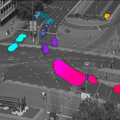
Optic Flow
Correspondence problems are one of the key problems in computer vision. They appear for example in motion analysis, image matching, or stereo vision. The goal is to assign structures in one image to structures in a second image, in a way that corresponding structures are as similar as possible ...

Stereo Reconstruction
The goal of dense stereo vision is to reconstruct realistic 3D models from two or more stereo images. In its most elementary setup, stereo vision is closely related to the optical flow problem between two images. Compared to pure optical flow, the motion of the pixels in a stereo setting is additionally restricted by the geometry of the image pair, the so called epipolar geometry. ...
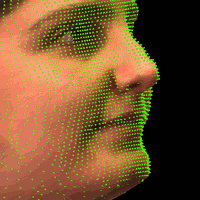
Scene Flow
Scene flow denotes the real 3-D motion of objects in the scene, as opposed to optical flow, which only describes the projection of this motion on the 2-D image plane. In contrast to structure from motion, where a single camera moves through a static environment, ...

Shape from Shading
Shape from Shading (SfS) means recovering a three-dimensional
surface from the shading information contained in a
two-dimensional image under known illumination conditions
and reflectance properties of the surface.
...
Pose Tracking
3-D pose tracking is the task to follow the 3-D position and orientation of a known object through a video sequence. There are a multitude of applications for which pose tracking is necessary, such as self localization and object grasping in robotics, motion capture, or human computer interaction.
...

Image Segmentation
The partitioning of an
image into meaningful regions is one of the principal computer vision tasks.
On the way from the raw pixel data up to a meaning of the image, it is
necessary to reduce the amount of information and to represent it in a
compact manner...

Semidiscrete Analysis and Numerics of Diffusion Processes
Diffusion filters of image analysis are modelled and analysed in a semidiscrete setting. Stability and convergence of numerical schemes can be analysed in this way, and interesting new numerical schemes can be derived ...

Hyperbolic Schemes
There are many models in image processing and computer vision that
employ hyperbolic partial differential equations. Of particular
interest for image processing and computer vision task are
economic schemes with high shock resolution that result in
sharp edges. We construct new finite difference schemes
for this purpose.
...

Fast Explicit Diffusion
There are two popular ways to implement anisotropic diffusion filters with a
diffusion tensor: Explicit finite difference schemes are simple but become
inefficient due to severe time step size restrictions, while semi-implicit
schemes are more efficient but require to solve large linear systems of
equations. We present a novel class of algorithms that combine the advantages
of both worlds
...

Additive Operator Splittings
An efficient numerical approach for the acceleration of algorithms is the use
of so called splitting schemes. They decompose a complicated problem into
multiple problems that are numerically simpler. So-called additive operator
splittings (AOS) offer specific advantages over the widely-used multiplicative
splittings.
...

Multigrid Methods
Multigrid methods are among the fastest and most accurate numerical
schemes for the solution of linear and nonlinear system of equations.
They create a sophisticated coarse-to-fine hierarchy starting from
the original equation system. Very accurate results are already
obtained within a few iterations.
...
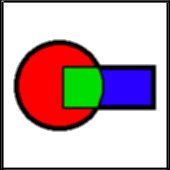
Efficient Parallel Algorithms
For certain problems the use of sophisticated numerical schemes may still
not be sufficient to obtain the desired performance. At this point, one should
consider the development of efficient parallel algorithms that are tailored
...

Algorithms for Specific Hardware
Modern consumer hardware offers new opportunities. We develop cell phone
adaptations of our algorithms and exploit fast parallel hardware like
graphics cards or the PlayStation 3 video console to obtain
substantial speedups.
...
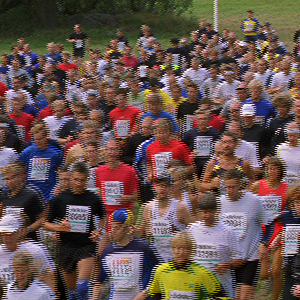
Movie Processing
In the times of digital media, the processing of video sequences and movies
becomes more important every year. A particular challenge in the context of
video processing is the fact that objects typically move between subsequent
frames
...

Medical Image Analysis
Medical image analysis is one of the main application fields for
novel digital image processing methods. We have explored a number of
applications that serve as demonstrators for our methods for image
denoising, structure enhancement, segmentation and classification.
...
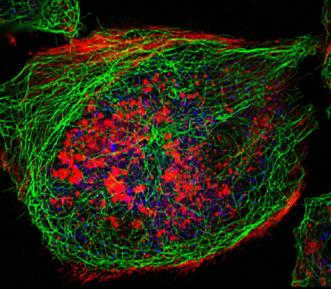
Bioinformatics and Systems Biology
The rapid progress within the areas of bioinformatics
and systems biology gives rise to numerous image analysis
problems. We collaborate with a number of researchers at
Saarland University and other research institutes in order
to address these problems.
...

Computer Aided Quality Control
Quality control in industrial production is a key factor for the success
of the products. In order to achieve uniform quality standards,
automisation using machine vision methods is becoming more and
more important. Often real-time requirements create algorithmic challenges.
...

Information Security and Cryptography
Information security and cryptography play a major role in the digital age.
Images as confidential information constitue a special type of messages.
This allows adapted attacks and on the other side opens the door to novel
cryptographic applications.
...

Beauty and Wellness
Beauty and wellness are areas where one usually would not expect applications
from digital image processing and computer vision. However, our research
shows that these fields offer an interesting, so far unexplored potential.
...
MIA Group
©2001-2023
The author is not
responsible for
the content of
external pages.
Imprint -
Data protection